Search
Remove Ads
Advertisement
Summary 
Loading AI-generated summary based on World History Encyclopedia articles ...
Search Results

Definition
Stupa
A stupa (literally “heap” or “pile”) is a reliquary, a shrine containing the remains of a holy or sainted person and/or artifacts (relics) associated with them, originating in India prior to the 5th century BCE as tombs of holy men and evolving...
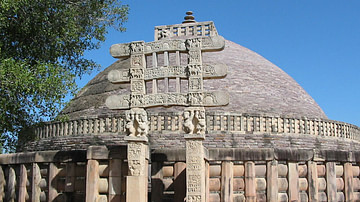
Article
Ten Great Stupas from Around the World
A stupa is a reliquary containing the remains (relics) of an individual associated with great spiritual power and insight, most often (since the 3rd century BCE) with the Buddha (l. c. 563 - c. 483 BCE). The form, a hemisphere topped by a...
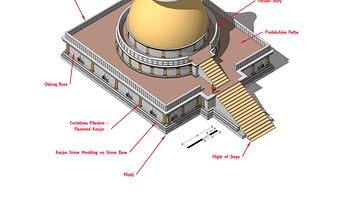
Image
Stupa - Labelled Isometric View
An isometric image of Badalpur stupa showing the various elements which make up a stupa. Dated to 2nd - 5th Cent CE
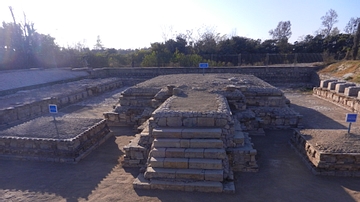
Image
Stupa at Jinnan Wali Dheri
The small but well-preserved stupa at Jinnan Wali Dheri missing its dome (at the hands of ancient looters). The stupa is exquisitely decorated and is a compact version of the larger monuments seen around Taxila and has been recently restored...
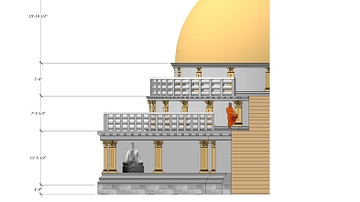
Image
Stupa Front Detail
A detailed view of the front of a typical Gandharan stupa from Taxila at the site of Badalpur. Dated to 2nd - 5th Cent CE
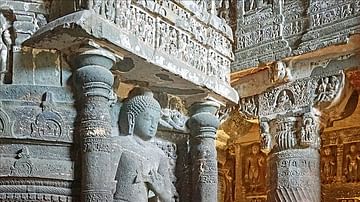
Image
Stupa in Ajanta
Ajanta (2nd century BCE – 6th century CE) sculpture showing highly evolved skills of the early Indian artists. A stupa belonging to Cave 26 is shown with sculpted figure of Buddha.
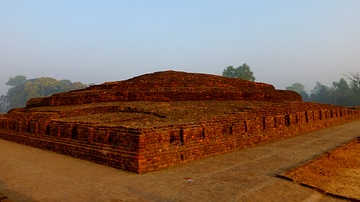
Image
Stupa at Piprahwa
Brick stupa at Piprahwa, discovered by William Claxton Peppe in the late 19th century CE. The stupa and other artifacts on site strongly suggested that Piprahwa was ancient Kapilavastu. However, the other possiblity, Tilaurakot was not dismissed...

Image
Stupa at Harwan Monastery, Kashmir
Another view of the stupa at the Harwan Monastery in Kashmir, India.
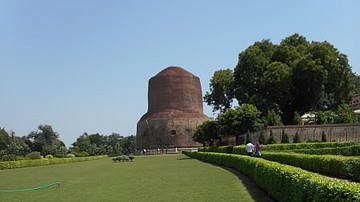
Image
Dhameka Stupa, Sarnath
The Dhameka Stupa, as seen from the Dharmarajika Stupa. The Dhameka Stupa was built during the Mauryan period (3rd century BCE) and enlarged in the 11th century CE. It is said to mark the spot where the Buddha gave his first sermon to a group...
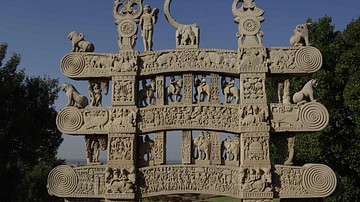
Image
Sanchi Stupa Gate
The oldest stupa in India, and possibly in the world, construction of the Great Stupa at Sanchi was decreed and overseen by Ashoka the Great (268-232 BCE). It stands 54 feet (17 meters) high and 120 feet (37 meters) wide with a spire (yashti...